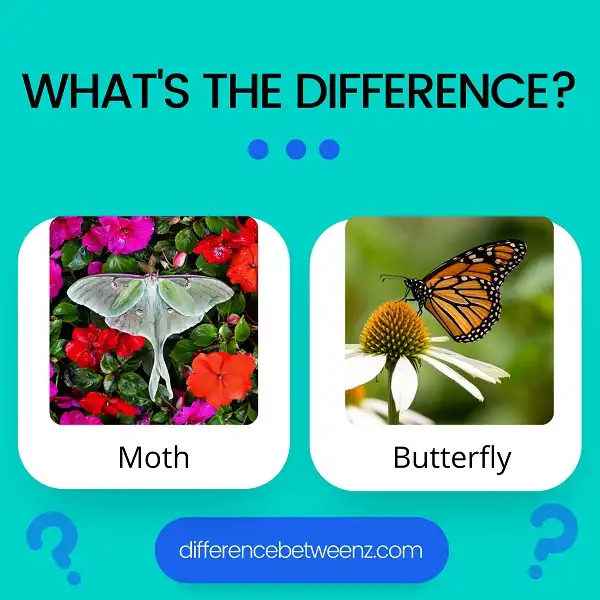Moth vs. Butterfly
What is Difference between Moth and Butterfly? Imagine that a beautiful insect rests on your arm on a beautiful afternoon, while you relax in the patio of your house. You can see that it has six legs and two antennas that are attached to a narrow body. With four large, delicate and magnificent green wings with details in red and yellow. If you touch one of the wings carefully, you notice that on your finger is a little dust. It is obvious that this is a moth or butterfly insect, but which one is it? Below this post is all about the Difference between Moth and Butterfly.
Difference between Moth and Butterfly
Butterflies and moths have a lot in common. Both belong to the order of the Lepidoptera, that is to say, those of “wings with scales”. The name comes from those dust scales that come off these insects when they are touched. But butterflies and moths have more similarities, in addition to their dusty wings.
Both insects begin their life as starving caterpillars, before they transform when they reach adulthood. Both feed on the nectar of the flowers and complement their diet with other liquids such as water or rotten fruit juice.
The difference between butterflies and moths is like the difference between frogs and toads; however, there are some basic characteristics that allow us to distinguish them; although there are also exceptions to the rule. Next, let’s see what actually makes a butterfly different from a moth.
It is easy to think of moths as small insects that flutter around bulbs, but not all moths are small; the largest moth in the world is the Attacus atlas and has a wingspan of about one foot (30.5 centimeters), the largest butterfly that is Ornithoptera alexandrae can become approximately the same size.
The differences between moths and butterflies fall into two categories: anatomical and behavioral. Most moths are nocturnal; that is, they fly and feed at night. On the other hand, butterflies are usually daytime and active during the day. So if you see a winged insect feeding on a flower in the afternoon, it is most likely a butterfly; but if you see a winged insect fluttering to make its way and reach the light in the middle of the night, it is very likely that it is a moth.
When it comes to resting butterflies and moths tend to hold their wings differently. It is common to see moths with their wings covering their backs or extended to the sides, but unless the butterflies are warming themselves in the sun; they usually keep their wings upright and folded; perpendicular to their backs.
Both butterflies and moths become pupae, but they become adults differently; because unlike butterflies, moths tend to spin a cocoon of silk around their pupae and sometimes choose to camouflage them with leaves or debris. As for the physical differences between both insects, these are easy to see:
The antennae of the butterflies are wider at the tip. While those of the moths look like small feathers.
In most cases, it is the butterflies that display the most vivid and attractive colors, this does not mean that moths have only opaque colors: white, brown, and gray; however, it is not uncommon for them to be otherwise.
Many moths use a series of loops called retinacles and braces that connect their rear wings with the forelegs. Butterflies do not have these structures.
Moths tend to have heavier bodies compared to butterflies.
In conclusion, not all members of the order Lepidoptera fit perfectly in the category of butterfly or moth, because there are numerous butterflies with qualities of moths; as well as many moths with butterfly qualities. Examples of this are jumping butterflies (known in English as skippers), which, although they fly during the day like butterflies; it usually has muted colors like moths. However, their patterns are neither butterflies nor moths.


